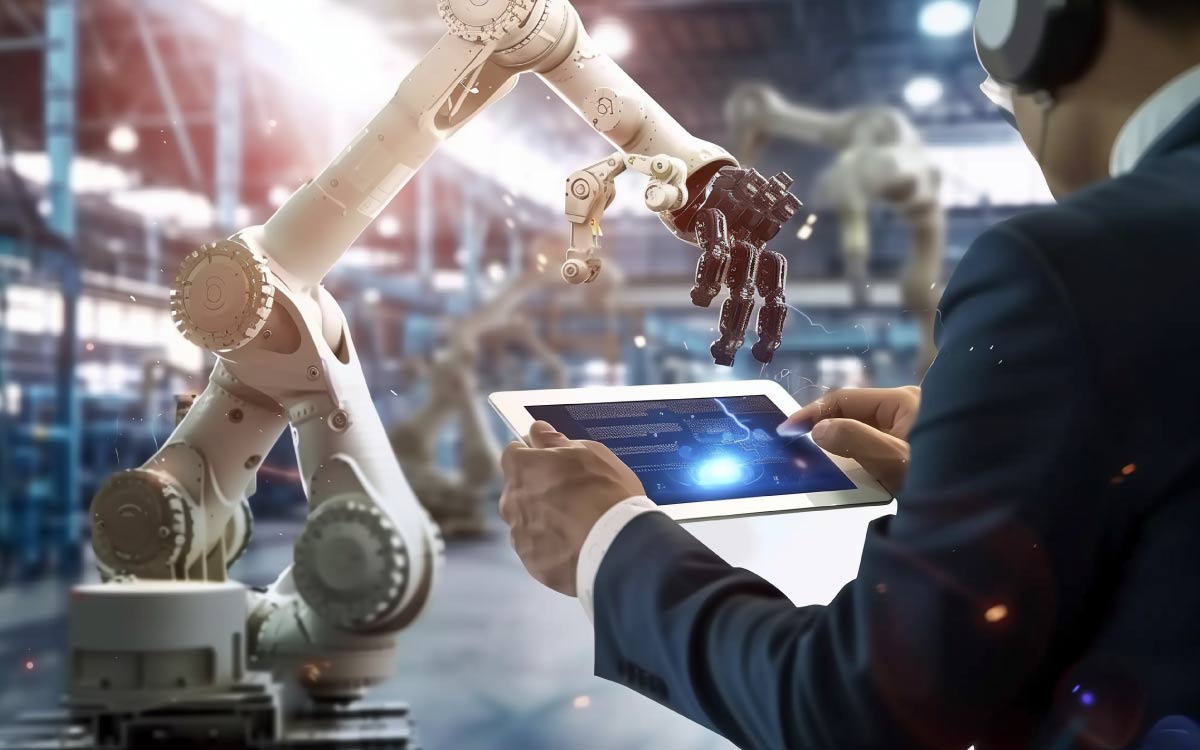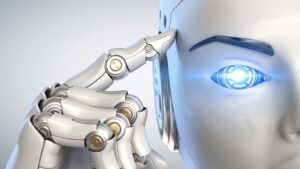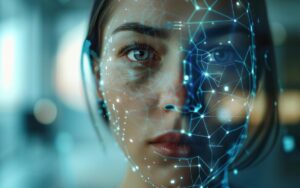If you aspire to work with Artificial Intelligence, you’ll need to be thorough about machine learning (ML) and deep learning and their relationship. Although these two terms are often used interchangeably, they have distinct meanings and applications.
Understanding these technologies is crucial, especially as they drive innovations that impact our lives and businesses. This article will spotlight deep learning vs. machine learning and explore their differences, similarities, applications, and future.
Want to learn more about machine learning, deep learning, and other AI concepts? An AI and machine learning program is an ideal next step.
But first, let’s learn the basics.
What is Deep Learning?
Deep learning, a specialized branch of machine learning, employs multi-layered neural networks to analyze complex data patterns. Inspired by the human brain, it excels in computer vision, natural language processing, and speech recognition tasks. Unlike traditional methods, deep learning models refine outputs autonomously through iterative learning.
Deep learning models depend on extensive data sets for effective training, tackling intricate real-world issues, and adapting to new situations. They process data through layers of interconnected neurons, mirroring the brain’s information processing. Deep learning experts play a critical role in designing and optimizing neural networks, selecting data sets, and interpreting results for accuracy, driving advancements in solving diverse challenges.
What is Machine Learning?
Machine learning is a subset of AI, which enables systems to learn autonomously from experience rather than explicit programming. Models are trained with large data sets, using algorithms to analyze data and improve task performance and decision-making.
For example, Spotify uses machine learning to understand user music preferences, updating algorithms based on user interactions for better music recommendations. Similarly, Netflix and Amazon use ML to offer personalized content suggestions to viewers.
Machine learning focuses on developing algorithms that allow computers to learn and predict outcomes independently. It involves training algorithms on large data sets to identify patterns and make decisions. Expertise in algorithm design, data preparation, and result interpretation is crucial for effective application across diverse fields.
Also Read: AI vs. Machine Learning
Deep Learning vs. Machine Learning: How Each Works
The Workings of Machine Learning
The ML process begins with feeding data into algorithms. These algorithms then analyze the data to find patterns and make predictions. There are three main types of machine learning:
Supervised Learning
In supervised learning, machines are trained using labeled data. For instance, if experts want a machine to recognize cats in images, they provide a data set where each image is labeled as either ‘cat’ or ‘not cat.’ Machine learning engineers play a crucial role in accurately curating and labeling this data set, ensuring the machine learns to make correct predictions.
Unsupervised Learning
In unsupervised learning, machines learn from unlabeled data. They identify patterns and group similar data points independently. For example, experts may use unsupervised learning to categorize customer segments based on purchasing behavior without providing predefined labels. Machine learning experts design algorithms and validate the results obtained from unsupervised learning to derive meaningful insights from the patterns identified.
Reinforcement Learning
This type of learning involves training machines through trial and error, where they receive rewards for correct actions and penalties for mistakes. For instance, machine learning engineers will implement reinforcement learning to teach a robot to walk by rewarding successful steps. Skilled professionals define the reward system, set parameters, and monitor the machine’s progress, adjusting the learning process to achieve optimal performance.
The Workings of Deep Learning
Deep learning uses neural networks to mimic the human brain’s structure and function, allowing the machine to learn from vast amounts of data. Critical features of deep learning include:
Neural Networks
Field experts design and optimize the architecture of deep neural networks. Based on the task, they select suitable network structures, such as convolutional or recurrent neural networks, and adjust the parameters of these networks to improve accuracy and performance.
Large Data Sets
Deep learning thrives on large data sets. Deep learning specialists manage and curate these data sets, ensuring they are diverse and represent the problem domain. More data allows the deep learning model to learn complex patterns and make more accurate predictions.
High Computational Power
Training deep neural networks requires significant computational resources. Experts use GPUs (Graphics Processing Units) to accelerate the complex calculations involved in processing and learning from large data sets. They optimize computational resources to enhance training efficiency and model performance.
Also Read: What is Edge AI?
More Differences Between Machine Learning and Deep Learning
The table below highlights the other significant differences between deep learning and machine learning.
| Machine Learning | Deep Learning | |
| Data Representation | Uses structured data like tabular data or engineered feature vectors. Relies on predefined features extracted by domain experts. | It employs neural networks (DNNs) to automatically learn hierarchical representations from raw data (images, audio, text). Effectively handles unstructured data. |
| Relationship to AI | Applies statistical techniques to train models for predictions or decisions within AI. | Specialized subsets utilize DNNs to mimic human brain structure, learning complex patterns directly from data. |
| Data Size | Operates effectively with moderate-sized data sets (thousands to tens of thousands of data points). | Thrives on large-scale data sets, requiring millions of data points due to complexity and the need for robust generalization. |
| Outputs | Produces numerical predictions, classifications, and structured outputs based on trained models. | Generates a broader range of outputs, including text generation, speech recognition, and complex pattern recognition. |
| Algorithm Type | Encompasses various algorithms (linear regression, decision trees) requiring manual feature engineering. | It relies on DNNs that autonomously learn hierarchical features from data, reducing the need for explicit feature engineering. |
| Usage | Widely used in diverse industries (finance, healthcare) for tasks like predictive maintenance and recommendation systems. | Applied in high-level pattern recognition tasks (image/speech recognition, NLP, autonomous systems) due to its capability to process complex data types effectively. |
| Training Hardware | Trained on standard CPUs, accessible for smaller-scale applications. | Requires specialized hardware (GPUs, TPUs) for intensive computations needed to process large-scale data efficiently. |
| Human Intervention | Requires human intervention for data preprocessing, feature engineering, and algorithm selection. | Reduces human intervention by autonomously learning relevant features from data, minimizing manual preprocessing post-deployment. |
| Setup Time | Can be set up relatively quickly and is suitable for rapid prototyping. | Requires longer setup times due to extensive data preprocessing training for complex neural networks. |
| Model Training Time | Requires less training time compared to Deep Learning, which is suitable for smaller data sets. | Necessitates longer training times due to the complexity of network architectures and large data sets. |
| Feature Engineering | Relies on manual feature engineering to select relevant features from data. | Mitigates the need for explicit feature engineering by learning hierarchical representations directly from raw inputs. |
| Computational Resources | Less computationally intensive, suitable for deployment on standard hardware. | Demands substantial computational resources (high-performance GPUs, specialized hardware) to train DNNs effectively. |
| Result Interpretation | Produces more interpretable results to humans based on explicit features learned from data. | Can produce highly accurate predictions, but results may be more challenging to interpret due to complex, hierarchical representations learned by DNNs. |
| Problem Complexity | Suitable for more straightforward to moderately complex problems, where interpretability is crucial. | Excels in solving highly complex problems requiring deep hierarchical learning (image analysis, NLP, autonomous systems). |
| Applications | Applied across diverse domains (finance, healthcare) for predictive analytics anomaly detection. | Used in advanced fields (image/speech analysis, language translation), leveraging the capability to effectively understand and process complex data. |
| Data Dependency | Operates effectively with smaller data sets and emphasizes the quality of extracted features. | Highly dependent on large-scale data sets to train effectively, emphasizing quantity and diversity of data for robust learning and generalization. |
Similarities Between Machine Learning and Deep Learning
The following are some of the similarities between machine learning and deep learning
Statistical Foundation
Machine and deep learning rely on statistical methods like regression and decision trees. Skilled experts ensure algorithms train well and give accurate results.
Need for Large Data Sets
Machine and deep learning accuracy depends on big, high-quality data sets. Machine learning needs 50-100 data points per feature, while deep learning starts with thousands. Skilled professionals prep and manage these data sets for the best performance.
Continuous Improvement
Experts refining machine learning and deep learning algorithms continue to feed them new data. This ongoing process sharpens their ability to spot patterns, keeping algorithms effective and adaptable.
Also Read: The Future of AI: What You Need to Know in 2024
Deep Learning vs. Machine Learning: Future and Career Prospects
Machine learning and deep learning are two prominent fields driving innovation in artificial intelligence (AI) today. Understanding their future and career prospects is crucial for aspiring professionals.
1. Market Demand
Both are witnessing increasing demand in the healthcare, finance, and automotive industries. Companies leverage these technologies to enhance customer experiences, optimize operations, and develop innovative products.
2. Career Opportunities
Career opportunities in machine learning and deep learning are diverse and lucrative. Roles include machine learning engineer, data scientist, and AI researcher. These professionals are in high demand due to their ability to extract insights from data and develop advanced AI solutions.
3. Salary Insights
The average salary for machine learning engineers ranges from $98000 to $100000 per year, depending on experience and location. Similarly, deep learning specialists can expect to earn between $8000 to $20000 annually, reflecting the high value placed on expertise in these fields.
4. Future Trends
Advancements in machine learning and deep learning are expected to drive innovation in areas such as autonomous vehicles, personalized medicine, and natural language processing. As these technologies mature, their integration into everyday life will continue to expand.
6. Education and Skills
To enter the field of machine learning and deep learning, acquiring a solid foundation in mathematics, statistics, and programming (especially Python) is essential. Continuous learning and staying updated with the latest research are also crucial due to the rapid evolution of AI technologies
Also Read: The Double-Edged Sword of AI Deepfakes: Implications and Innovations
Get Skilled in Machine Learning and Deep Learning
In summary, machine learning and deep learning are distinct but share some common ground. Both fields offer promising career opportunities in AI-driven industries, emphasizing the need for specialized skills and continuous learning.
Enrolling in an online AI and machine learning program can be a ticket to a bright future for those aiming to carve out a career in the thrilling realms of machine learning and deep learning.
This program isn’t just about learning skills and concepts. It also equips you with hands-on training and knowledge to apply the concepts to real-world cases through Capstone projects. You will get an insider view of the industry from global AI and ML experts and earn a prestigious certification to help you stand out in the job market.
You might also like to read:
Performance Modeling: What is an ROC Curve?
Artificial Intelligence Career Path
What Is a Generative Adversarial Network? Types, How They Work, Pros, and Cons






